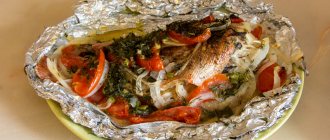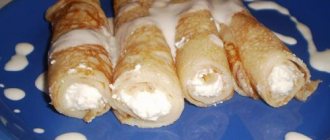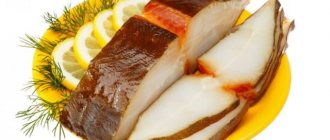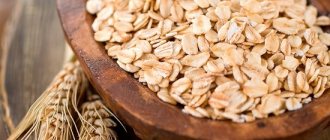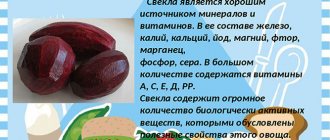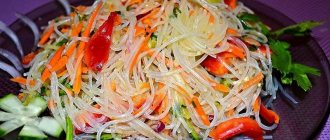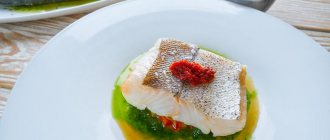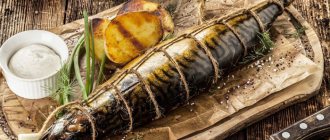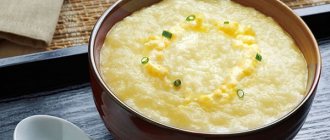Sea bass is widely used in Japanese cuisine, where it is the basis for many traditional dishes. But in Russia, the meat of this deep predator is no less in demand, which is due to its rich biochemical composition and high nutritional value: a full complex of vitamins, polyunsaturated omega-3 acids, protein, amino acids, protein. Along with this, fish is low in calories and is easily digestible. Therefore, dishes made from it will be desirable in every person’s diet. They are especially indicated for pregnant women, children and the elderly.
- Baked in foil
Description
Sea bass belongs to the scorpionfish family from the order Perciformes. Compared to its river relatives, it looks much larger. The size of the carcass can reach 1 m and weigh more than 10 kg. It depends on the species. The color also differs, but red is more often sold. The Japanese call this fish "mebaru", which refers to its huge bulging eyes. It is by this feature and sharp fins that this representative can be recognized.
There are up to 90 varieties of sea bass, but the most commercially available are beaked, white, golden, and stone. They live in the cold waters of the Atlantic and Pacific Oceans, and are sometimes found in the waters of Northern Norway.
The meat is considered a delicacy, as it has a delicate and rich taste. The carcasses have a pleasant white-pink hue. Fish is often sold in cut form: frozen, smoked or salted. You can prepare many tasty and healthy dishes from sea bass; it can be stewed, baked, fried, salted, boiled, smoked.
Useful properties of sea bass
Sea bass meat is fatty and stays fresh for a long time; sea bass tastes best when salted. The fat content of sea bass can vary greatly, but typically 100g of fillet contains 1g of Omega-3 fatty acids.
Sea bass is rich in vitamins and B12, , , , , , , , , , , and also contains the following minerals - magnesium, phosphorus, sulfur, iodine, chromium, cobalt, calcium, sodium, potassium, chlorine, iron, zinc, copper, manganese, fluorine, molybdenum, nickel.
Sea bass is also a good source of protein and contains the most beneficial amino acid - taurine. Taurine is necessary for normalizing cholesterol levels, the synthesis of other amino acids, and metabolism. Sea bass is useful for atherosclerosis, high blood pressure, and cardiovascular diseases.
Sea bass is considered a tasty food fish. Fresh sea bass is very good fried or boiled. There are many recipes for sea bass dishes.
Holds the record for the presence of cobalt
Dangerous properties of sea bass
You should be careful when cutting up a whole sea bass carcass, since a wound from a poisonous spine can cause not only a lot of unpleasant sensations, but even affect the flexion of the fingers, causing painful partial paralysis.
Also, this fish is contraindicated for idiosyncrasy.
Sea bass turns out unusually tender if you cook it in milk sauce with potatoes and eggs, as in the recipe from this video.
Attention! The information is for informational purposes only and is not intended to make a diagnosis or prescribe treatment. Always consult a specialized doctor!
Tatyana Eliseeva chief editor of the Food+ project
Ask a Question
Rating:
6.7
/10
Votes: 3
Usefulness of material 7
Reliability of information 6
Formatting of Article 7
Calories and nutritional value
Sea bass fillet is valued for its rich and unique composition. It contains:
- vitamins: groups B, A, E, PP, D;
- micro- and macroelements: phosphorus, iodine, cobalt, magnesium, iron, selenium, potassium and others;
- polyunsaturated omega-3 fatty acids;
- amino acids;
- protein;
- taurine;
- antioxidants.
Depending on the species, the calorie content per 100 grams of fresh product varies from 100 to 190 kcal. The energy value is high. Composition of BJU: proteins - 16-18 g, fats - 4-11 g, carbohydrates - less than 0.1 g.
Number of calories and nutritional value of fish of different cooking methods:
| View | Calorie content, kcal | Proteins, g | Fats, g | Carbohydrates, g |
| Hot smoked | 167 | 23,4 | 8,1 | 0 |
| Cold smoked | 87 | 17,3 | 2 | 0 |
| Boiled | 111 | 15,1 | 3,7 | 0,2 |
| Fried | 138 | 17,1 | 4,9 | 2,1 |
| Baked in the oven | 120 | 18 | 4 | 0,3 |
Calorie content Sea bass. Chemical composition and nutritional value.
Nutritional value and chemical composition of “Sea Perch”.
The table shows the nutritional content (calories, proteins, fats, carbohydrates, vitamins and minerals) per 100 grams of edible portion.
| Nutrient | Quantity | Norm** | % of the norm in 100 g | % of the norm in 100 kcal | 100% normal |
| Calorie content | 103 kcal | 1684 kcal | 6.1% | 5.9% | 1635 g |
| Squirrels | 18.2 g | 76 g | 23.9% | 23.2% | 418 g |
| Fats | 3.3 g | 56 g | 5.9% | 5.7% | 1697 g |
| Water | 77.1 g | 2273 g | 3.4% | 3.3% | 2948 g |
| Ash | 1.4 g | ~ | |||
| Vitamins | |||||
| Vitamin A, RE | 40 mcg | 900 mcg | 4.4% | 4.3% | 2250 g |
| Retinol | 0.04 mg | ~ | |||
| Vitamin B1, thiamine | 0.11 mg | 1.5 mg | 7.3% | 7.1% | 1364 g |
| Vitamin B2, riboflavin | 0.12 mg | 1.8 mg | 6.7% | 6.5% | 1500 g |
| Vitamin B4, choline | 60.8 mg | 500 mg | 12.2% | 11.8% | 822 g |
| Vitamin B5, pantothenic | 0.36 mg | 5 mg | 7.2% | 7% | 1389 g |
| Vitamin B6, pyridoxine | 0.13 mg | 2 mg | 6.5% | 6.3% | 1538 g |
| Vitamin B9, folates | 7.1 mcg | 400 mcg | 1.8% | 1.7% | 5634 g |
| Vitamin B12, cobalamin | 2.4 mcg | 3 mcg | 80% | 77.7% | 125 g |
| Vitamin C, ascorbic acid | 1.4 mg | 90 mg | 1.6% | 1.6% | 6429 g |
| Vitamin D, calciferol | 2.3 mcg | 10 mcg | 23% | 22.3% | 435 g |
| Vitamin E, alpha tocopherol, TE | 0.8 mg | 15 mg | 5.3% | 5.1% | 1875 |
| Vitamin K, phylloquinone | 0.1 mcg | 120 mcg | 0.1% | 0.1% | 120000 g |
| Vitamin RR, NE | 4.8 mg | 20 mg | 24% | 23.3% | 417 g |
| Niacin | 1.6 mg | ~ | |||
| Macronutrients | |||||
| Potassium, K | 300 mg | 2500 mg | 12% | 11.7% | 833 g |
| Calcium, Ca | 120 mg | 1000 mg | 12% | 11.7% | 833 g |
| Magnesium, Mg | 60 mg | 400 mg | 15% | 14.6% | 667 g |
| Sodium, Na | 75 mg | 1300 mg | 5.8% | 5.6% | 1733 g |
| Sera, S | 210 mg | 1000 mg | 21% | 20.4% | 476 g |
| Phosphorus, P | 220 mg | 800 mg | 27.5% | 26.7% | 364 g |
| Chlorine, Cl | 165 mg | 2300 mg | 7.2% | 7% | 1394 g |
| Microelements | |||||
| Iron, Fe | 0.9 mg | 18 mg | 5% | 4.9% | 2000 g |
| Yod, I | 60 mcg | 150 mcg | 40% | 38.8% | 250 g |
| Cobalt, Co | 30 mcg | 10 mcg | 300% | 291.3% | 33 g |
| Manganese, Mn | 0.1 mg | 2 mg | 5% | 4.9% | 2000 g |
| Copper, Cu | 120 mcg | 1000 mcg | 12% | 11.7% | 833 g |
| Molybdenum, Mo | 4 mcg | 70 mcg | 5.7% | 5.5% | 1750 g |
| Nickel, Ni | 6 mcg | ~ | |||
| Selenium, Se | 36.5 mcg | 55 mcg | 66.4% | 64.5% | 151 g |
| Fluorine, F | 140 mcg | 4000 mcg | 3.5% | 3.4% | 2857 g |
| Chromium, Cr | 55 mcg | 50 mcg | 110% | 106.8% | 91 g |
| Zinc, Zn | 1.5 mg | 12 mg | 12.5% | 12.1% | 800 g |
| Essential amino acids | |||||
| Arginine* | 1.1 g | ~ | |||
| Valin | 1.1 g | ~ | |||
| Histidine* | 0.4 g | ~ | |||
| Isoleucine | 0.9 g | ~ | |||
| Leucine | 1.6 g | ~ | |||
| Lysine | 1.7 g | ~ | |||
| Methionine | 0.5 g | ~ | |||
| Methionine + Cysteine | 0.7 g | ~ | |||
| Threonine | 0.9 g | ~ | |||
| Tryptophan | 0.19 g | ~ | |||
| Phenylalanine | 0.7 g | ~ | |||
| Phenylalanine+Tyrosine | 1.3 g | ~ | |||
| Nonessential amino acids | |||||
| Alanin | 1.5 g | ~ | |||
| Aspartic acid | 1.9 g | ~ | |||
| Glycine | 0.8 g | ~ | |||
| Glutamic acid | 2.7 g | ~ | |||
| Proline | 0.6 g | ~ | |||
| Serin | 0.9 g | ~ | |||
| Tyrosine | 0.6 g | ~ | |||
| Cysteine | 0.2 g | ~ | |||
| Sterols (sterols) | |||||
| Cholesterol | 60 mg | max 300 mg | |||
| Saturated fatty acids | |||||
| Saturated fatty acids | 0.7 g | max 18.7 g | |||
| 14:0 Miristinovaya | 0.27 g | ~ | |||
| 16:0 Palmitinaya | 0.43 g | ~ | |||
| 17:0 Margarine | 0.02 g | ~ | |||
| 18:0 Stearic | 0.06 g | ~ | |||
| Monounsaturated fatty acids | 1.67 g | min 16.8 g | 9.9% | 9.6% | |
| 16:1 Palmitoleic | 0.34 g | ~ | |||
| 18:1 Oleic (omega-9) | 0.55 g | ~ | |||
| 20:1 Gadoleic (omega-9) | 0.36 g | ~ | |||
| 22:1 Erucic (omega-9) | 0.42 g | ~ | |||
| Polyunsaturated fatty acids | 0.42 g | from 11.2 to 20.6 g | 3.8% | 3.7% | |
| 18:2 Linolevaya | 0.03 g | ~ | |||
| 18:3 Linolenic | 0.01 g | ~ | |||
| 18:4 Steoride Omega-3 | 0.02 g | ~ | |||
| 20:4 Arachidonic | 0.03 g | ~ | |||
| 20:5 Eicosapentaenoic acid (EPA), Omega-3 | 0.02 g | ~ | |||
| Omega-3 fatty acids | 0.36 g | from 0.9 to 3.7 g | 40% | 38.8% | |
| 22:5 Docosapentaenoic acid (DPA), Omega-3 | 0.03 g | ~ | |||
| 22:6 Docosahexaenoic acid (DHA), Omega-3 | 0.28 g | ~ | |||
| Omega-6 fatty acids | 0.06 g | from 4.7 to 16.8 g | 1.3% | 1.3% |
The energy value of sea bass is 103 kcal.
Primary Source: Created in the application by the user. Read more.
** This table shows the average levels of vitamins and minerals for an adult. If you want to know the norms taking into account your gender, age and other factors, then use the “My Healthy Diet” application.
Beneficial features
The value of red perch for the human body is due to its rich chemical composition. List of useful properties:
- lowers the level of “bad” cholesterol, which protects against the development of atherosclerosis;
- prevents hypoxia;
- controls blood sugar;
- has a positive effect on the thyroid gland;
- serves as a prevention of diseases of the cardiovascular, nervous and digestive systems;
- enhances metabolism and cleanses of waste and toxins, which promotes weight loss;
- reduces blood pressure;
- improves hematopoiesis;
- normalizes vision.
Meat is indicated for inclusion in the daily diet in case of physical and nervous exhaustion, as well as after serious illnesses and operations. Children need it to prevent rickets and as a source of vitamins and fatty acids. In the absence of medical contraindications for pregnant women, seafood is important for maintaining good health and full development of the fetus. It is noted that with regular consumption of fish during this period, children are born healthier and smarter.
One of the valuable components in the product is taurine, the effect of which is equivalent to drug therapy. Its lack in the body entails irreversible changes in the brain, impairs vision and negatively affects the psychological background.
Regular consumption of sea bass helps restore the structure of the skin and returns it to a healthy appearance. Hair becomes shiny and silky, and nails become strong. This is especially important for women, for whom such a nutritional supplement will serve as an anti-aging agent.
Which perch is healthier?
According to scientific research, it is better to eat fish caught from its natural habitat. This is explained by a higher content of beneficial omega-3 acids than in those grown artificially.
This may be due to differences in diet. The wild predator feeds on plankton, which produces polyunsaturated fats. On fish farms, fish are fed mainly with compound feed, and algae is rarely given.
Useful properties and composition of sea bass
Meat composition
Sea bass meat contains all the necessary nutrients for normal human life. The same applies to other types of marine fish, and to be precise, this definition applies to almost all seafood.
Beneficial substances include:
- Phosphorus.
- Magnesium.
- Iodine.
- Chromium.
- Calcium.
- Zinc.
- Copper.
- Sulfur.
- Cobalt.
- Chlorine.
- Iron.
- Potassium.
- Manganese and other beneficial substances.
100 grams of sea bass contain 18.2 g of protein and 3.4 g of fat, while there are no carbohydrates at all.
Calorie content
Sea bass meat has very few calories. 100 grams of meat contains only 100 kcal, maybe a little more. During cold smoking, its calorie content drops to 88 kcal. 100 grams of boiled sea bass contains about 112 kcal, and if sea bass is fried, its calorie content will be about 137 kcal per 100 grams of weight.
Availability of vitamins
In addition to the most important microelements for the human body, perch meat contains a whole bunch of vitamins, such as:
- A.
- IN.
- WITH.
- D.
- E.
- RR.
On top of that, sea bass meat contains Omega-3 fatty acids, as well as taurine and protein, including the antioxidant myelin.
Medical aspect
From a medical point of view, the beneficial properties of perch are very extensive and cannot be overestimated. The presence of Omega-3 fatty acids allows you to normalize the metabolic process, as well as provide support for the body in case of prerequisites for diseases of the nervous system and cardiovascular system, while reducing cholesterol levels in the blood. It is advisable to eat sea bass for people with high blood pressure, as well as people with high blood sugar levels.
Taurine, which is found in fish meat, helps to activate the growth of cells, and above all, young and healthy ones, improving metabolic processes. Vitamin B12 has a positive effect on DNA synthesis in the human body.
Eating sea bass helps improve the condition of the skin and hair, and also calms the nervous system.
Medicine recommends eating sea bass for many categories of people, including pregnant women, children, teenagers and the elderly.
Potential dangers and contraindications
Harm from sea bass is possible if it lived in environmentally unfavorable waters: in this case, the carcasses are saturated with heavy metals, mercury and become infected with dangerous parasites. Therefore, pregnant women and children should introduce fish into their diet with extreme caution and buy it only from trusted suppliers.
Despite its great benefits, perch fillet has a number of contraindications for consumption. These include:
- gout;
- excess calcium in the body;
- stones in the kidneys;
- individual intolerance to individual components in the composition;
- allergies to fish and seafood;
- oncology.
When purchasing refrigerated red snapper fillets, you may encounter a stale product, since it is transported from afar. It is important to pay attention to the appearance of the carcasses and the smell. The presence of gray gills and cloudy eyes is unacceptable, which indicates staleness. Pressing on the meat should not leave any dents.
Another danger comes from the fins, which have a toxic substance at the tips. If it gets under the skin, it can cause severe inflammation. Therefore, you should wear gloves when cleaning to avoid damaging your hands.
Recommendations for use
The fish product tolerates any thermal effect well, without losing its beneficial and taste qualities. There are many culinary recipes with sea bass. It is stewed, pickled, baked, fried, smoked, boiled or steamed. The last 2 options are recommended for children, pregnant and breastfeeding women, and the elderly. It is advisable to eat fish dishes three times a week and in the morning.
A healthy and safe daily portion of fish for an adult is 120-140 g. For children, this figure varies depending on age: up to 3 years - 25-30 g, 3-6 years - 50-60 g, 7-14 - 70- 80 g. Since perch meat is not bony, it can be ground into a puree for babies and given as complementary food from 10 months.
In many weight loss diets, low-fat fish are included in the permitted diet . In terms of nutritional value, this product surpasses even pork. When creating a dietary menu, you should adhere to some recommendations:
- Take into account the compatibility of fish with vegetables. The most acceptable: carrots, greens, all types of cabbage, beets, peppers, tomatoes. Potatoes and radishes are excluded.
- Fillet is exclusively stewed, boiled or baked. It is unacceptable to eat it salted, smoked or fried.
- It is advisable not to add salt to the dishes, but you can add lemon juice.
Due to the presence of proteins, amino acids and protein in perch, there is no loss of muscle mass. Saturation occurs quickly and for a long time, without the deposition of extra calories.
Grilled sea bass recipe. Calorie, chemical composition and nutritional value.
Nutritional value and chemical composition of “grilled sea bass”.
The table shows the nutritional content (calories, proteins, fats, carbohydrates, vitamins and minerals) per 100 grams of edible portion.
| Nutrient | Quantity | Norm** | % of the norm in 100 g | % of the norm in 100 kcal | 100% normal |
| Calorie content | 119.4 kcal | 1684 kcal | 7.1% | 5.9% | 1410 g |
| Squirrels | 16.6 g | 76 g | 21.8% | 18.3% | 458 g |
| Fats | 4.9 g | 56 g | 8.8% | 7.4% | 1143 g |
| Carbohydrates | 0.8 g | 219 g | 0.4% | 0.3% | 27375 g |
| Organic acids | 1.6 g | ~ | |||
| Alimentary fiber | 0.6 g | 20 g | 3% | 2.5% | 3333 g |
| Water | 71.9 g | 2273 g | 3.2% | 2.7% | 3161 g |
| Ash | 1.273 g | ~ | |||
| Vitamins | |||||
| Vitamin A, RE | 39.2 mcg | 900 mcg | 4.4% | 3.7% | 2296 g |
| Retinol | 0.031 mg | ~ | |||
| beta carotene | 0.003 mg | 5 mg | 0.1% | 0.1% | 166667 g |
| Vitamin B1, thiamine | 0.094 mg | 1.5 mg | 6.3% | 5.3% | 1596 g |
| Vitamin B2, riboflavin | 0.098 mg | 1.8 mg | 5.4% | 4.5% | 1837 |
| Vitamin B5, pantothenic | 0.403 mg | 5 mg | 8.1% | 6.8% | 1241 g |
| Vitamin B6, pyridoxine | 0.142 mg | 2 mg | 7.1% | 5.9% | 1408 g |
| Vitamin B9, folates | 9.338 mcg | 400 mcg | 2.3% | 1.9% | 4284 g |
| Vitamin B12, cobalamin | 2.317 mcg | 3 mcg | 77.2% | 64.7% | 129 g |
| Vitamin C, ascorbic acid | 11.91 mg | 90 mg | 13.2% | 11.1% | 756 g |
| Vitamin D, calciferol | 2.221 mcg | 10 mcg | 22.2% | 18.6% | 450 g |
| Vitamin E, alpha tocopherol, TE | 1.078 mg | 15 mg | 7.2% | 6% | 1391 g |
| Vitamin RR, NE | 4.6897 mg | 20 mg | 23.4% | 19.6% | 426 g |
| Niacin | 1.341 mg | ~ | |||
| Macronutrients | |||||
| Potassium, K | 294.07 mg | 2500 mg | 11.8% | 9.9% | 850 g |
| Calcium, Ca | 114.15 mg | 1000 mg | 11.4% | 9.5% | 876 g |
| Magnesium, Mg | 53.13 mg | 400 mg | 13.3% | 11.1% | 753 g |
| Sodium, Na | 63.14 mg | 1300 mg | 4.9% | 4.1% | 2059 g |
| Sera, S | 205.52 mg | 1000 mg | 20.6% | 17.3% | 487 g |
| Phosphorus, P | 195.2 mg | 800 mg | 24.4% | 20.4% | 410 g |
| Chlorine, Cl | 160.69 mg | 2300 mg | 7% | 5.9% | 1431 g |
| Microelements | |||||
| Bor, B | 48.3 mcg | ~ | |||
| Iron, Fe | 0.982 mg | 18 mg | 5.5% | 4.6% | 1833 |
| Yod, I | 57.93 mcg | 150 mcg | 38.6% | 32.3% | 259 g |
| Cobalt, Co | 28.966 mcg | 10 mcg | 289.7% | 242.6% | 35 g |
| Manganese, Mn | 0.1076 mg | 2 mg | 5.4% | 4.5% | 1859 |
| Copper, Cu | 182.07 mcg | 1000 mcg | 18.2% | 15.2% | 549 g |
| Molybdenum, Mo | 4.138 mcg | 70 mcg | 5.9% | 4.9% | 1692 g |
| Nickel, Ni | 5.793 mcg | ~ | |||
| Fluorine, F | 2.76 mcg | 4000 mcg | 0.1% | 0.1% | 144928 g |
| Chromium, Cr | 53.1 mcg | 50 mcg | 106.2% | 88.9% | 94 g |
| Zinc, Zn | 1.4841 mg | 12 mg | 12.4% | 10.4% | 809 g |
| Digestible carbohydrates | |||||
| Mono- and disaccharides (sugars) | 0.8 g | max 100 g | |||
| Glucose (dextrose) | 0.276 g | ~ | |||
| Sucrose | 0.276 g | ~ | |||
| Fructose | 0.276 g | ~ | |||
| Essential amino acids | |||||
| Arginine* | 1.062 g | ~ | |||
| Valin | 1.062 g | ~ | |||
| Histidine* | 0.386 g | ~ | |||
| Isoleucine | 0.869 g | ~ | |||
| Leucine | 1.545 g | ~ | |||
| Lysine | 1.641 g | ~ | |||
| Methionine | 0.483 g | ~ | |||
| Methionine + Cysteine | 0.676 g | ~ | |||
| Threonine | 0.869 g | ~ | |||
| Tryptophan | 0.183 g | ~ | |||
| Phenylalanine | 0.676 g | ~ | |||
| Phenylalanine+Tyrosine | 1.255 g | ~ | |||
| Nonessential amino acids | |||||
| Alanin | 1.448 g | ~ | |||
| Aspartic acid | 1.834 g | ~ | |||
| Glycine | 0.772 g | ~ | |||
| Glutamic acid | 2.607 g | ~ | |||
| Proline | 0.579 g | ~ | |||
| Serin | 0.869 g | ~ | |||
| Tyrosine | 0.579 g | ~ | |||
| Cysteine | 0.193 g | ~ | |||
| Sterols (sterols) | |||||
| Cholesterol | 57.93 mg | max 300 mg | |||
| beta sitosterol | 2.069 mg | ~ | |||
| Saturated fatty acids | |||||
| Saturated fatty acids | 1 g | max 18.7 g | |||
| 14:0 Miristinovaya | 0.261 g | ~ | |||
| 16:0 Palmitinaya | 0.682 g | ~ | |||
| 17:0 Margarine | 0.019 g | ~ | |||
| 18:0 Stearic | 0.11 g | ~ | |||
| 20:0 Arakhinovaya | 0.018 g | ~ | |||
| Monounsaturated fatty acids | 2.997 g | min 16.8 g | 17.8% | 14.9% | |
| 16:1 Palmitoleic | 0.36 g | ~ | |||
| 18:1 Oleic (omega-9) | 1.874 g | ~ | |||
| 20:1 Gadoleic (omega-9) | 0.358 g | ~ | |||
| 22:1 Erucic (omega-9) | 0.406 g | ~ | |||
| Polyunsaturated fatty acids | 0.656 g | from 11.2 to 20.6 g | 5.9% | 4.9% | |
| 18:2 Linolevaya | 0.277 g | ~ | |||
| 18:3 Linolenic | 0.01 g | ~ | |||
| 18:4 Steoride Omega-3 | 0.019 g | ~ | |||
| 20:4 Arachidonic | 0.029 g | ~ | |||
| 20:5 Eicosapentaenoic acid (EPA), Omega-3 | 0.019 g | ~ | |||
| Omega-3 fatty acids | 0.3 g | from 0.9 to 3.7 g | 33.3% | 27.9% | |
| 22:5 Docosapentaenoic acid (DPA), Omega-3 | 0.029 g | ~ | |||
| 22:6 Docosahexaenoic acid (DHA), Omega-3 | 0.27 g | ~ | |||
| Omega-6 fatty acids | 0.3 g | from 4.7 to 16.8 g | 6.4% | 5.4% |
The energy value of grilled sea bass is 119.4 kcal.
Primary Source: Created in the application by the user. Read more.
** This table shows the average levels of vitamins and minerals for an adult. If you want to know the norms taking into account your gender, age and other factors, then use the “My Healthy Diet” application.
Perch recipes
Before cooking, red snapper is cleaned and cut into portions. The whole carcass is often baked in the oven. To prevent the meat from falling apart and burning during frying, it is first marinated for about half an hour in a mixture of special herbs and spices. To do this, you can buy them or use your favorite ones from your own supplies.
To preserve the juicy structure in the finished state, it is recommended to roll fish pieces in flour, breadcrumbs, semolina or corn flakes before frying. A very tasty dish is made in batter, for which eggs and flour are mixed.
Baked in foil
Perch baked in the oven in foil turns out tasty and aromatic, with a pleasant crispy crust.
Required Products:
- perch carcasses - 2 pcs. ;
- Parmesan cheese - 150 g;
- tomatoes - 2–3 pcs.;
- sweet pepper - 1 pc.;
- onion - 1 head;
- garlic - 2-3 cloves;
- sour cream - 120 g;
- greens - for decoration;
- salt, ground pepper - to taste.
Cooking sequence:
- The fish is washed under running water.
- Vegetables are cut into arbitrary shapes, greens are finely chopped with a knife.
- The cheese is rubbed with shavings.
- The carcass is salted and peppered inside and out. Place on a sheet of food foil.
- Vegetable preparations and finely chopped garlic are placed nearby, poured with sour cream and sprinkled with cheese and herbs.
- Roll it up into a bag and put it in the oven to bake. At a temperature of +190...+200 degrees, this takes about an hour.
- 10 minutes before the end, open so that a golden crust appears on top.
Fried
Pan-fried, breaded perch will be a tasty and satisfying dinner or lunch. To do this you will need the following composition:
- fish - 600–700 g;
- lemon - 1/4 part;
- refined sunflower oil - 2-3 tbsp. l.;
- basil, lettuce leaves - for decoration;
- breadcrumbs - 2 tbsp. l.;
- wheat flour - 20 g;
- salt, fish seasoning - to taste.
Process:
- After washing, fish carcasses are lightly dried on paper towels.
- Rub with salt and spices. Drizzle with freshly squeezed lemon juice.
- Roll first in flour, then in breadcrumbs.
- Fry in a hot frying pan with a little oil. Keep on each side for 2-3 minutes until golden brown.
Place the finished fish on lettuce leaves and garnish with basil sprigs, which will add a special aroma to the dish. Additionally, you can serve any sauce and fresh vegetables.
Application
It is known that there are more adherents to eating fish than meat; even some naturalists eat sea bass because of its beneficial properties. And for a healthy diet there is nothing better than boiled fish meat.
Cooking boiled sea bass is not difficult at all. Fresh or frozen meat (without defrosting) is placed in boiling, pre-salted water, spices, salt and herbs are added to taste. You need to cook for no more than 10-15 minutes so that the meat does not fall apart and the vitamins and nutrients are preserved.
Market Analytics
- Global cosmetics market 2021: an unprecedented test for the global cosmetics industry
- Top 10 Cosmetic Research and Development of 2021
- 2020 in the beauty industry – innovation without borders
Convenient search for beauty salons on our website
Beauty salons in Moscow Beauty salons in St. Petersburg Beauty salons in Ekaterinburg Beauty salons in Novosibirsk
Latest blog posts on our website
- Naturecream / Properties of the “Sunny” oil itself
- Naturecream / “Sugar” wrinkles - or what glycation can do
- Naturecream / Esterified oils
- Naturecream / Arnica - the magical plant of alchemists
- Naturecream / Tremella Extract - Snow Mushroom Detox for Skin
- Prostye-sovety / How to visually enlarge your lips with makeup
- Naturecream / Apricot kernel oil for face
- Naturecream / MATRIXYL3000 - the best skin elasticity stimulator
- Naturecream / SPF in Natural Oils
- Naturecream / Geranium (Pelargonium) oil for skin health and beauty
Latest forum topics on our website
- Natalya / How to properly make a gelatin mask?
- Mrs._Smith / Badly sunburned! What to do?((
- Ice / Is it necessary to combine fitness classes with a diet?
- Antonova / What can be used for hair loss?
- Radio operatorKat / Who was on a protein diet?
Other articles in this section
| Fried mussels Among the world's delicacies, such a nutritious, low-calorie product with a piquant taste as mussel has long been firmly established. They are boiled, pickled and eaten raw, but anyone who tastes fried mussels at least once will undoubtedly become a fan of this simple but delicious dish. Gourmets and aesthetes of sea food value mussels not only for their attractive appearance and unique aroma, but also for a wide range of useful substances. |
| Rybets This representative of the carp family in Russia is better known as “syrt”, and is found in its southwestern regions. It is a semi-anadromous fish, but it is caught on the Don all year round. |
| Beluga Beluga is one of the oldest freshwater fish species on our planet. It is also the largest among its brothers. Its length can reach 5 meters, and its weight can be 1.5 tons. |
| Salted cod Today, cod is popular all over the world, it is easy to find fresh on the shelves of our stores. However, salted cod is no less popular: its use is a tribute to the ancient tradition of salting fish. In addition, salted cod has a much richer taste than fresh fish (the latter seems almost tasteless compared to it). |
| Spring capelin Capelin (Mallotus villosus) is a commercial fish from the smelt family (Osmeridae) of the order Osmeriformes. The size of one individual is small - no more than 30 cm in length (the average is about 20 cm), reaches a weight of 50-75 g, and can live up to 10 years. |
| Flying Fish Fish that can actually fly are quite common. This species belongs to the garfish family. The fish adapts perfectly to almost any living conditions, but the most “cozy” atmosphere for it is the warm waters of the subtropics. |
| Fried squid A dish of fried squid is common in countries on the Mediterranean coast. The process of preparing this dish is quite simple, just cut the pre-cleaned squid into rings, roll in wheat or chickpea flour and fry in a frying pan with the addition of vegetable and olive oil. |
| Fresh capelin Capelin belongs to the smelt fish family. There have been cases in history when fishermen caught too much fish from the Berents Sea. This had a very bad effect on the reproduction of capelin, and on the lives of those fish and birds that fed on this fish. Currently, there is a restriction on catching this fish, and the number of capelin is gradually increasing. |
| Sterlet A fish like sterlet leads an active lifestyle all year round. These fish do not swim alone, and it is extremely rare to see a lone sterlet. Sterlet belongs to the sturgeon family, but it does not make transitions. The fish move from the beginning of spring to the end of autumn, but not far. In winter, the sterlet lives in one place. This fish lives only in fresh water. |
| Hot smoked flounder Many nutritionists have already unanimously agreed that fish is much healthier and more valuable as a source of nutrients than meat. Fish meat is easily digestible by the body, it is rich in various unique and beneficial substances, and smoked fish can become a simple and very healthy delicacy for the whole family. |
